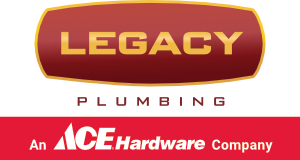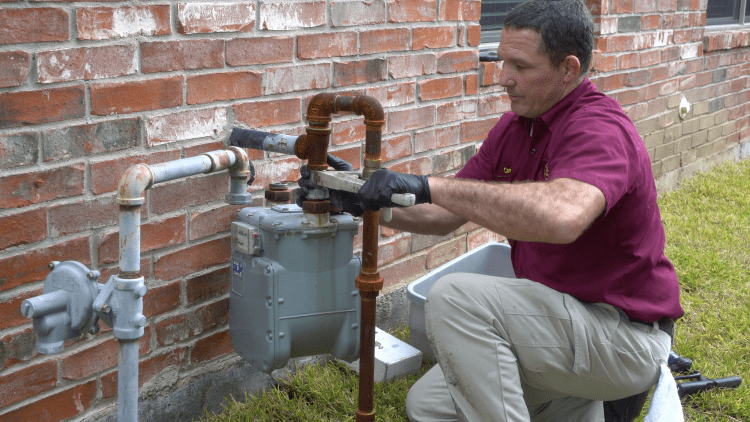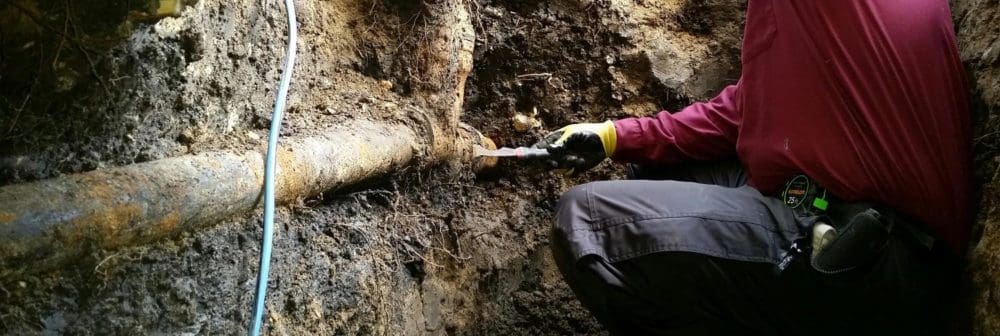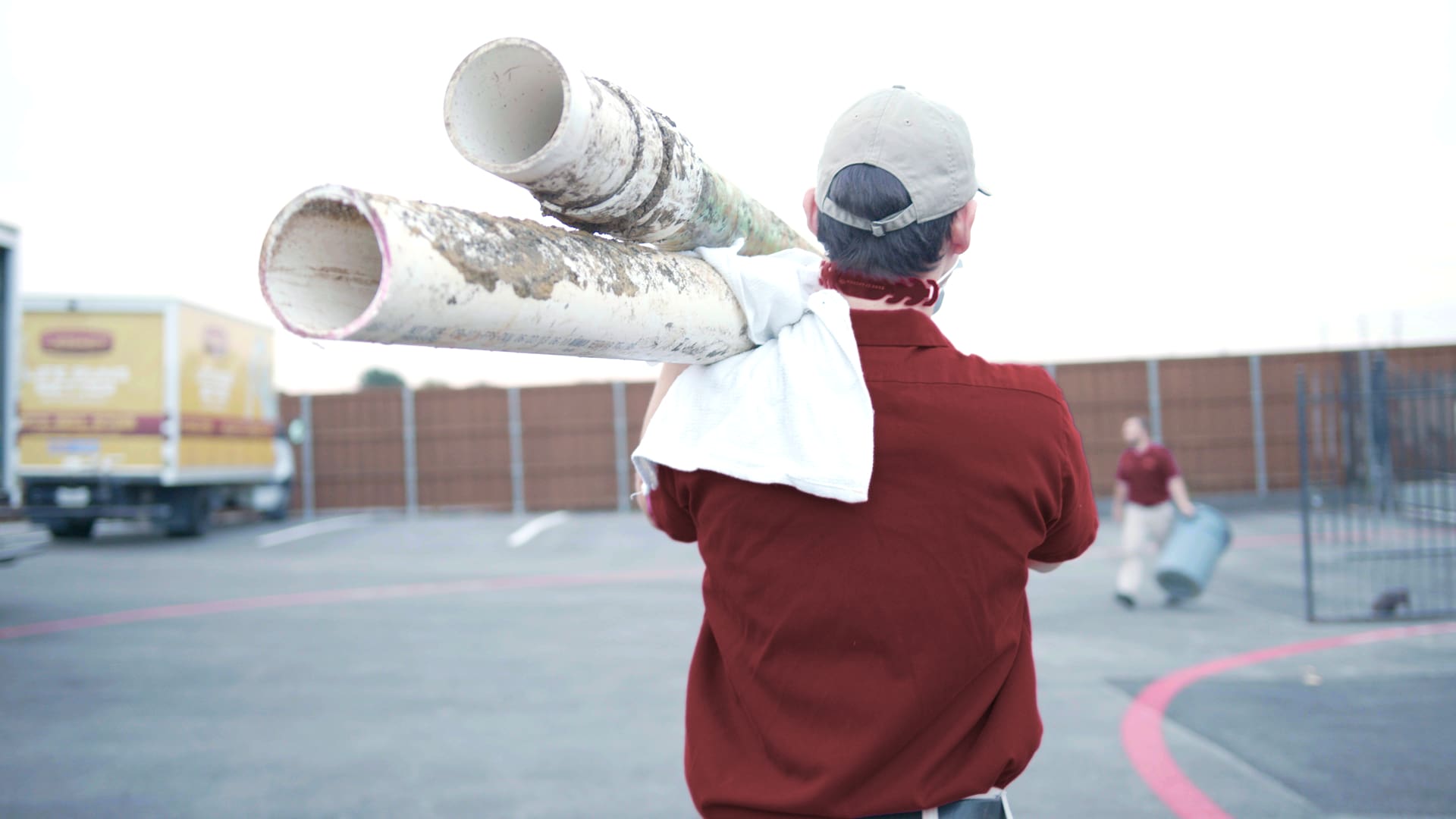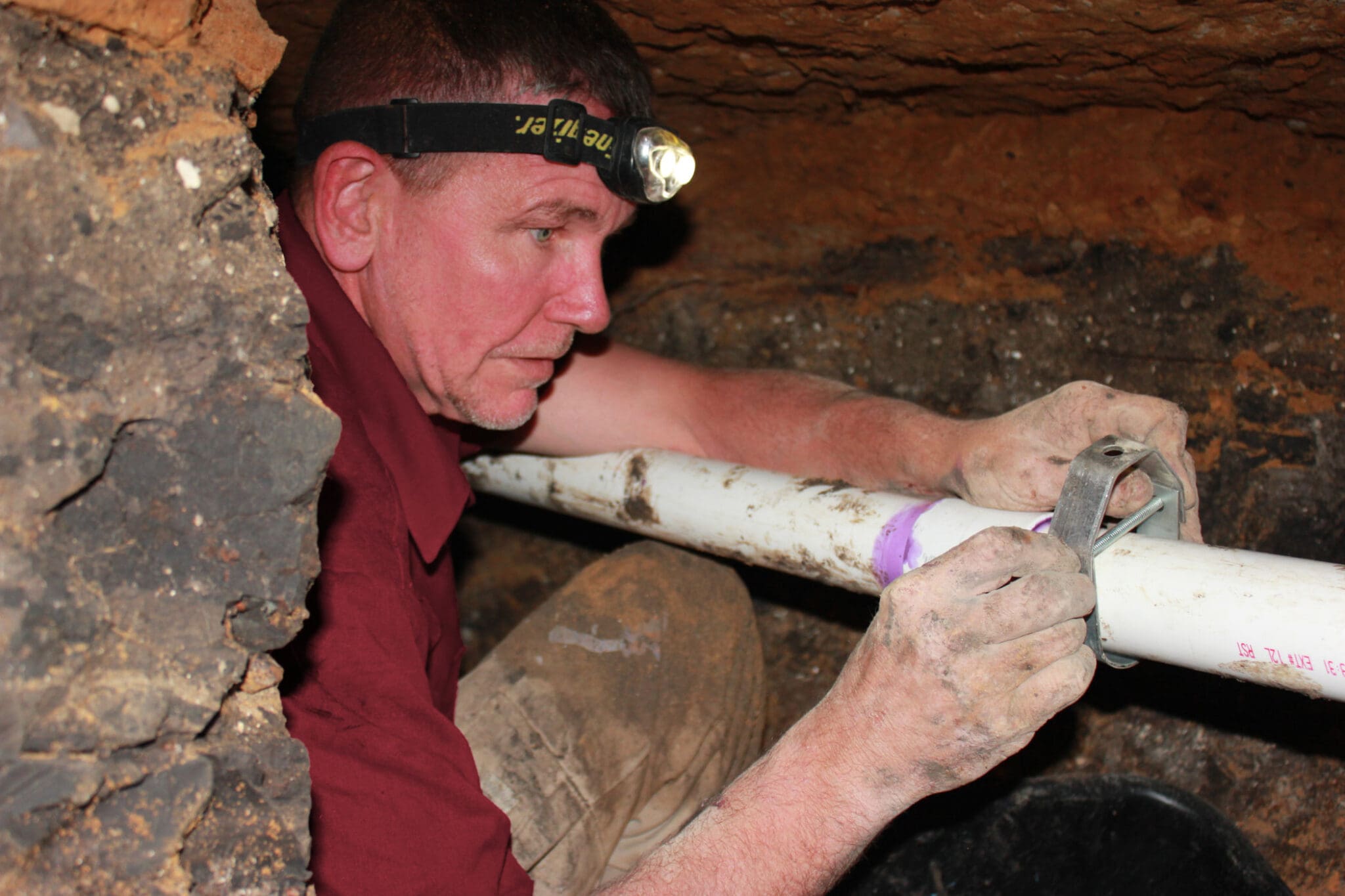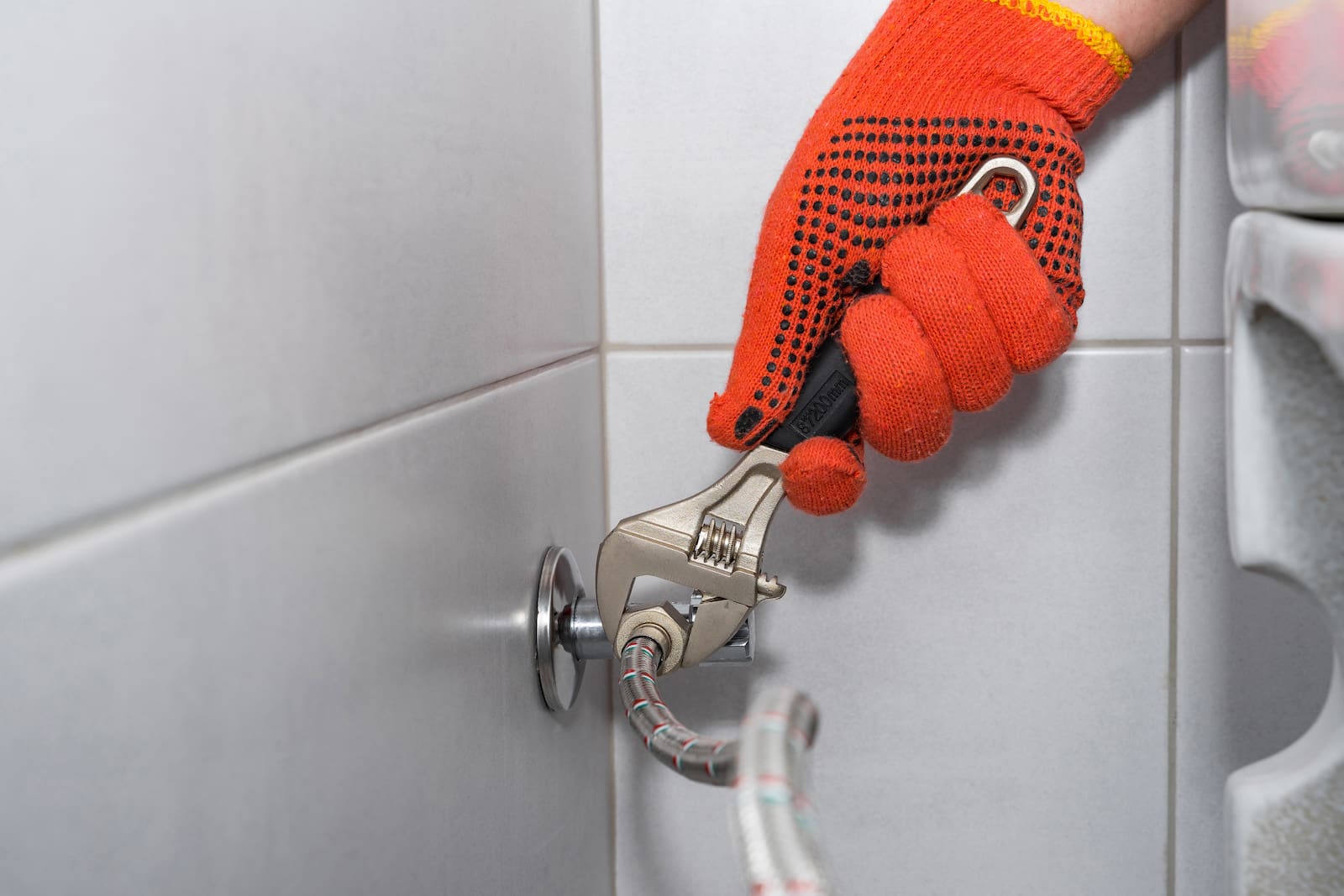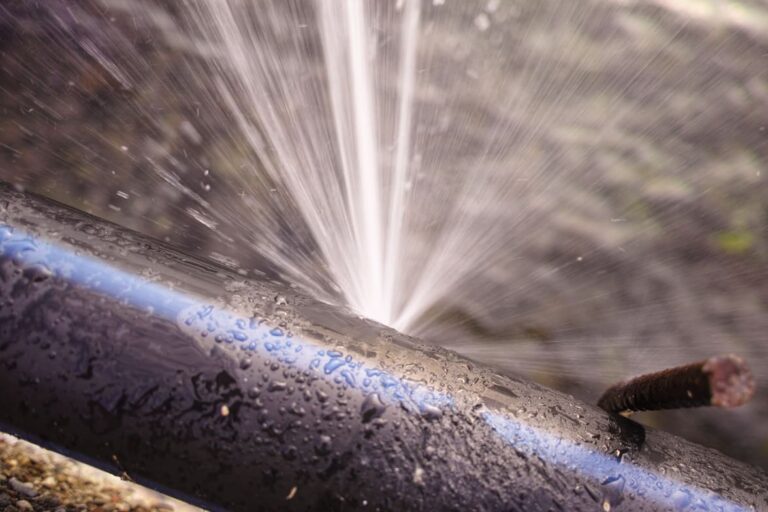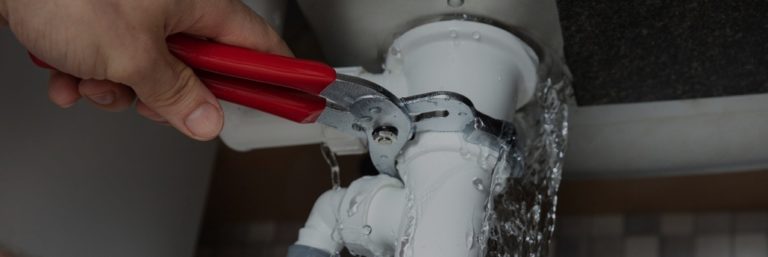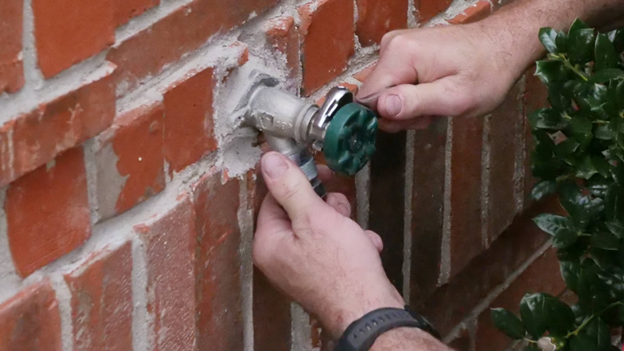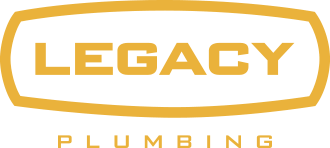Do you have a high water bill and live in North Dallas? Do you hear a faint hissing sound like water running in the wall or underneath a cabinet? Do you have a warm spot on your floor? Is the ground near your foundation unusually saturated? All of these can be symptoms of a slab leak if you have a slab foundation. Specifically: a leak on the pressurized fresh water pipes that deliver water to all of the faucets in your house.
Most houses in the North Dallas, McKinney/Frisco area (built before 2010) have copper water lines. If you have a concrete slab as the foundation of your house and if your house was plumbed with copper water lines, then those copper pipes run underneath the foundation. Finding and fixing these pipes when they develop a leak can be challenging because they are not easily accessible. This article goes through some of the different ways these leaks are resolved. The best solution for you will depend a lot on the way your house is constructed and where the leak is located.
The first way you can fix a leak is by jack-hammering the concrete slab, digging down to the pipe, and fixing it. The second way is to dig a tunnel through the dirt under the slab from the outside all the way to where the leak is. The third way is to abandon the leaking line under the slab and run a new line through the wall/attic. The last way is to use the existing copper line as a sleeve by running a new line through the old one. Read on to learn more about each of these methods!
Jack-Hammer the Slab

The key step for this type of repair is accurately locating the leak. If you miss it, you can end up punching multiple holes through the concrete and making a huge mess inside the house. There are different tools professionals use to pinpoint the leak under all the dirt and concrete. They use tracing equipment to trace the path that the copper line runs under the slab. They use listening equipment to “hear their way” to the point where the noise is loudest. They can also use infrared thermometers to narrow down any hot spots from a leak on a hot water line.
Once the convergence of evidence points to a specific spot, the flooring and concrete is demolished with a jack-hammer and the dirt is excavated until the pipe is accessible. A skilled professional will be able to do this process with minimal mess and make the flooring repair process as painless as possible. A less-skilled plumber can easily make a big mess inside the house while jack-hammering.
Sometimes this is the best way to make a slab leak repair. However, it is the most invasive method and requires flooring to be redone. It also only repairs the one spot that is leaking. Another leak could develop on that same line in the future. Finally, even with the best equipment and skill, there is no guarantee that the leak will be found on the first attempt. Factors like insulated lines or concrete foundation beams can make it very difficult.
Tunnel Under the House
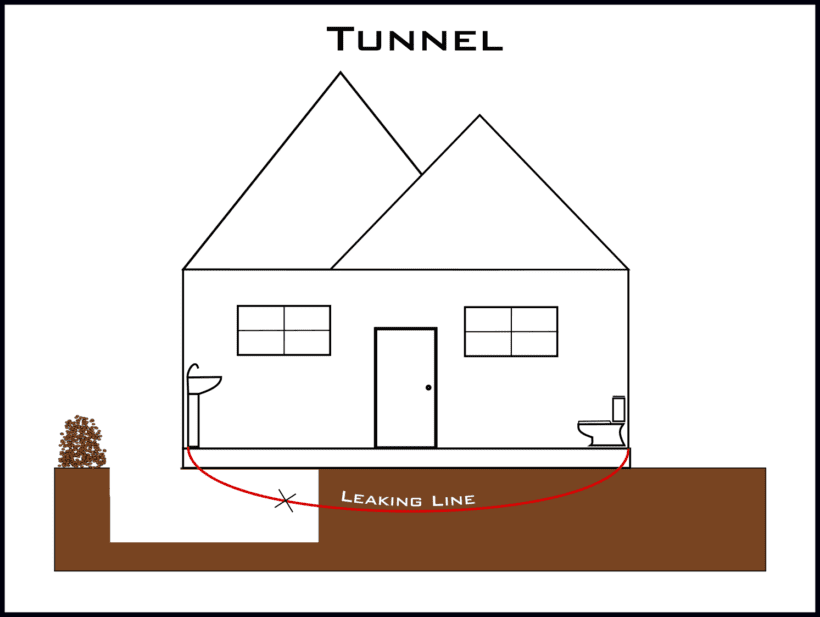
Digging a tunnel is the least invasive way (for the interior of the home) to make the repair. In order to repair a leak in this way, you must start by pinpointing the leak in the same way that you do when you are jack-hammering through the slab.
Once the leak is located, you need to find the nearest exterior wall. At that point, you dig an access pit about 3’ deep. Then, you tunnel horizontally under the slab until you reach the location of your repair. As you might imagine, this is a huge amount of work and is typically done (by hand) by a full excavation crew. There is no heavy equipment that is suited for this type of task.
An advantage to tunneling is that you have the ability to replace a bigger section of the damaged line, if necessary. But you are still limited to what can be exposed in the tunnel. Sometimes, the water leak is coming from a pipe encased in concrete and this concrete needs to be chipped out with a small jack-hammer so that the repair can be made.
It is a lot of work, but sometimes this is the best method for making the repair. If preventing damage on the inside of the home is a high priority and the leak is very close to an outside wall, this becomes a more appealing option, especially if re-routing is not easily accomplished.
Re-Route Through the Attic
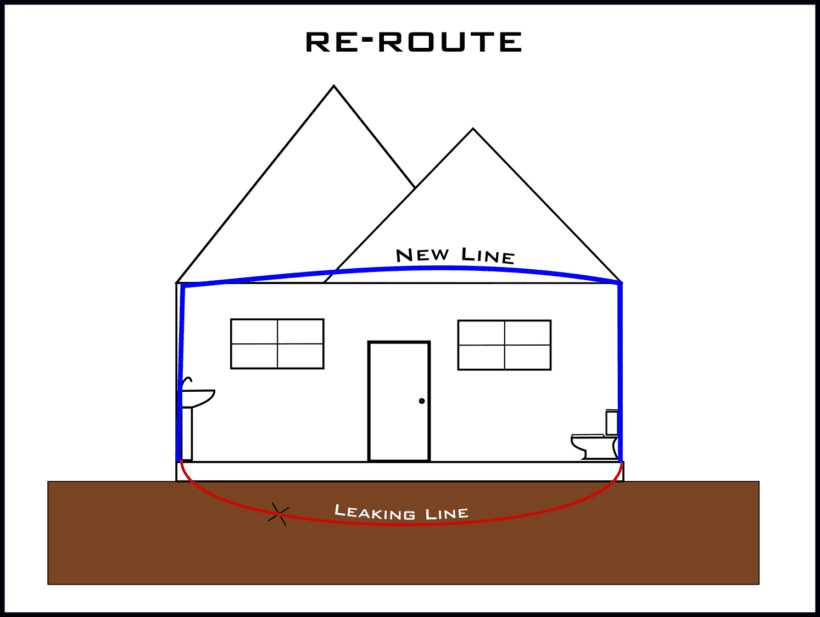
A re-route doesn’t focus on locating and repairing a single leak on a water line. Instead, a re-route is concerned with discovering which line is leaking under the slab and where the ends come up above the slab. Once this is done, the entire old copper line is abandoned under the slab, and a new line is run from “Point A” to “Point B” through the walls and through the attic.
Plumbers use a variety of different tools, equipment, and methods to find out which line is the leaking line and where it comes up into the wall. (The points where multiple copper pipes connect together in the wall are called “manifolds”). Tracing equipment and techniques are used to find the manifolds. Pressure testing tools and methods are used to determine which line(s) are leaking once the manifold is exposed.
Re-routing is a very good option because it eliminates the entire line and prevents potential leaks in the future. It does usually require cutting open the sheetrock wall in a few places, so that is one of the disadvantages. Overall, it is generally considered the best method of repairing a slab leak where practical (especially if the house is one-story).
It can be challenging though if the house has multiple stories. A lot depends on the framing of your home and how the water lines are run. A good knowledge of plumbing systems and house construction is necessary to do the job correctly. It is the most technically advanced method of repairing a slab leak, but the entire process is usually done in less than a day.
Pass-Through the Old Line
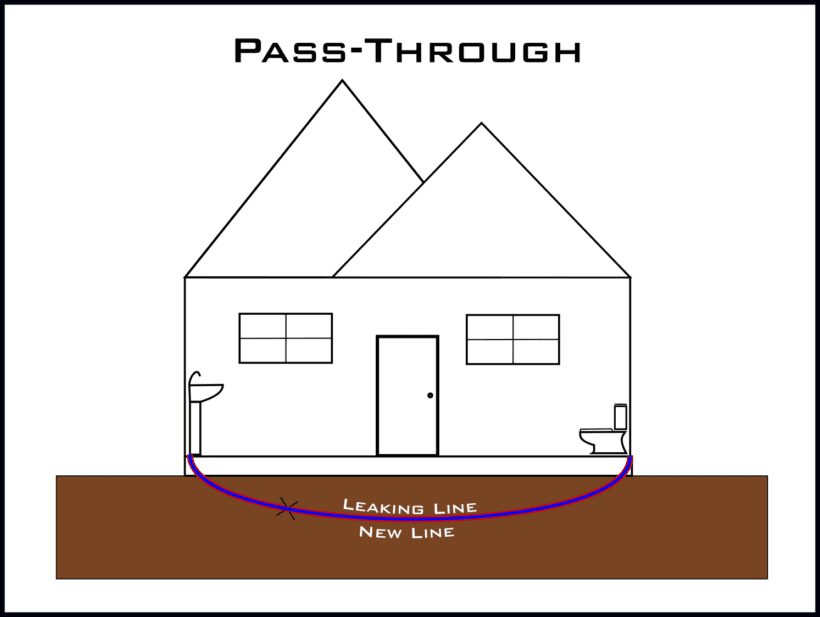
One oft-overlooked method of repairing a slab leak is called pass-through. It is very similar to the reroute approach. It still eliminates the entire leaking line. Once “Point A” and “Point B” of the leaking line are discovered a new, smaller line can sometimes be run through the old copper line by using it as a sleeve. Once the line is passed through from end to end, it can be reconnected and the water restored.
The main disadvantage of this option is that it reduces the diameter of the old line. You cannot do a pass-through unless your new line will be adequately sized to deliver water to the fixtures per plumbing code. It takes experience and knowledge of plumbing code to know which situation is a good candidate for the pass-through.
Another downside to pass-through is that it has a higher likelihood of being unsuccessful. If the old copper line is kinked, bent, or very long, it can be very difficult (or impossible) to run a new line through.
Alternatives
Pipe-lining is one new technology that is advertised as being a good solution for slab leaks. The basis of the technology is mostly used in large diameter sewer lines (that aren’t under pressure) in commercial environments. When it is applied to residential pressurized water systems, it involves coating the inside of your copper water lines with an epoxy that seals up any leaks or holes… Effectively lining the inside of the pipe with a new one similar to the pass-through method. Unfortunately, while it works great in theory, many people have been unsatisfied with the longevity of this type of repair and the initial upfront costs. It isn’t a method of repair that we recommend and becomes a huge headache when the pipe needs to be serviced in the future.
Conclusion
You will find many plumbers have a “one-size-fits-all” approach when it comes to slab leak repairs. As you can see, there are pros and cons of each method of repairing a slab leak. Most of the time, a reroute is the best option that provides the most value. However, the circumstances and your preferences will determine if one of the other options is the better. Hopefully, this article gives you a better understanding of what is involved in: spot repair by jackhammering, tunneling, rerouting, and sleeving. There is so much more that can be said about each one of these methods, though.
Legacy Plumbing specializes in slab leaks. As of Fall 2020, we have 5 technicians who diagnose and repair slab leaks on a regular basis. Right now we average about 2-3 slab leak repairs every week in the DFW area. Our reviews testify to the skill and precision each one of these professionals bring to the table. We go over all options of repairing the slab leak and pick the best one with you based on your needs and your home.
If you think you might have a slab leak, give us a call right now. Our Master Plumber will go over your situation in depth and help you determine what the next steps are.
